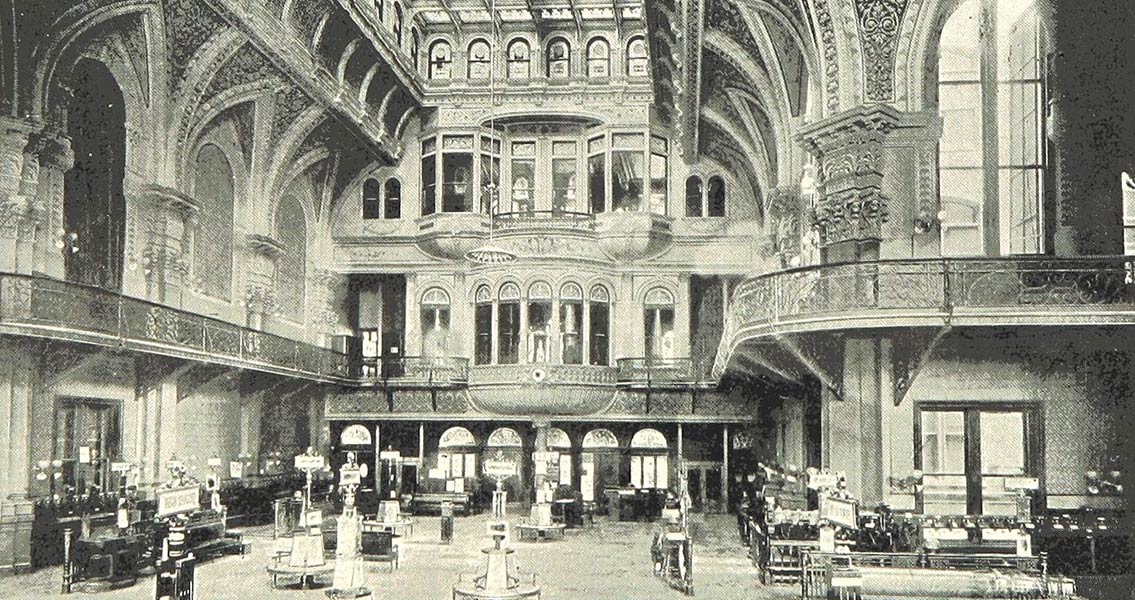<![CDATA[The 24th October marks the anniversary of 'Black Thursday', a key event in 1929 that is now considered the start of the Great Depression. The Depression still stands as one of the most extreme embodiments of 'boom and bust' economics, an economic pattern that the majority of industrialised countries still encounter today. The 1920's had been a period of boom in the USA, driven by post war optimism, but the following decade would be drastically different. Black Thursday itself was not a particularly bad day for the Stock Market, but looking back now it proved an ominous portent. The Dow Jones Industrial Average started the day at 305.85. It fell 11% during intra-day trading, but by the close of the day had returned to 299.47, meaning a total drop of an unexceptional 2%. Despite these superficially insignificant figures, Wall Street experts were alarmed. Trading volume on the day had been 12.9 million shares, roughly three times the normal amount. In many ways the concern and reaction of the Wall Street experts came to be just as important as the actual figures involved. Since the Stock Market's record breaking close of 381.2 on September 3rd, it had already fallen 20%. The three leading banks in the US, (Morgan Bank, National City Bank of New York and Chase National Bank) responded by buying up stock to restore confidence in the market. Initially the plan seemed to work, and at close on Friday 25th, the Dow Jones had recovered to 301.22. This optimism proved to be short lived, and on Monday the Dow Jones plummeted to 260 at the end of trading. The following day, now called 'Black Tuesday', saw the Stock Market Crash start in earnest, as investors panic sold their shares as a result of the failed intervention. By close on the Tuesday, the Dow Jones had fallen 11%, to 230.07. The Stock Market would finally bottom out on July 8th 1932, by which point the Dow Jones had lost 90%of its value. It would take another 32 years to reach its September 3rd 1929 peak. The causes of this cataclysmic crash, still the most severe experienced in the Western industrialised world, were deep rooted, and largely a consequence of irresponsibility in the boom years of the 1920s. Investing in shares had become extremely fashionable in the US in the post war years. From 1922 until 1929 the Stock Market had been growing at an average of 20% a year. Rags to riches success stories encouraged more and more people to get involved. Irresponsibility cut through society, from the management of the biggest banks down to normal working people. People were investing money they had borrowed from banks into the stock market, and banks were investing people's savings, meaning they didn't have enough to honour withdrawals. The spiralling debt left the economy in a precarious situation, mass speculation that required infinite growth to sustain itself. As soon as the reckless optimism started to be questioned, the situation started to unravel. On the 3rd October, England's Chancellor of the Exchequer described America's stock market as 'a perfect orgy of speculation'. Two of the USA's biggest newspapers, the New York Times and The Wall Street Journal agreed with the sentiment in editorials. This triggered the fear that destabilised the market, and a vicious cycle started. As investors began to sell their stocks in anticipation of a collapse, the newspapers started to focus more and more attention on the decline, thus causing more investors to sell their stock. The Great Depression saw devastating job cuts and wage reductions throughout the US. Consumer confidence dropped dramatically as well as industrial output. A tragic situation emerged where citizens were unable to access their life savings, as the banks simply no longer had the money to honour them. In many cases bank accounts were reduced to just 10% of the value that had been invested. A slow path to recovery started with the election of Franklin D. Roosevelt in 1933, and the abandoning of Laissez Faire politics. As we approach the anniversary of Black Thursday, it is interesting to consider the parallels that exist today. Although the Great Depression was by far the longest and most devastating financial collapse of the modern era, the recession of 2008 shows that the boom and bust model it embodied still remains.]]>
Black Thursday
